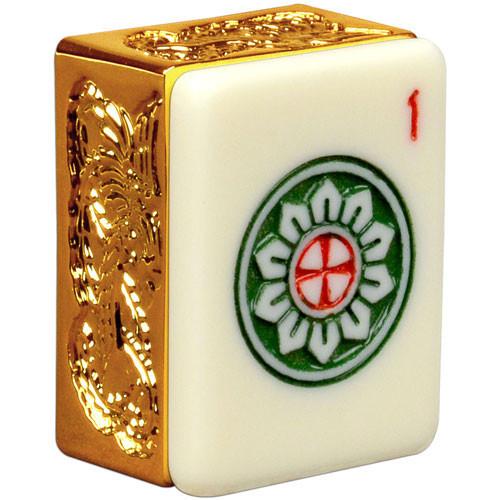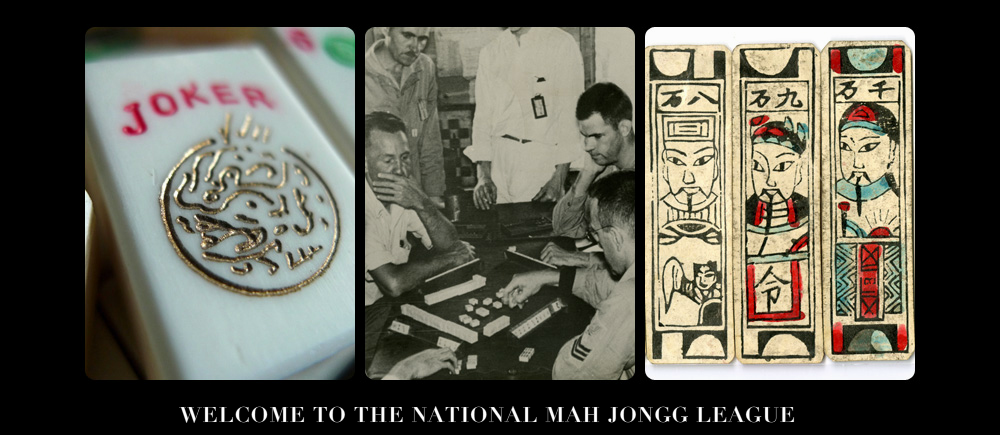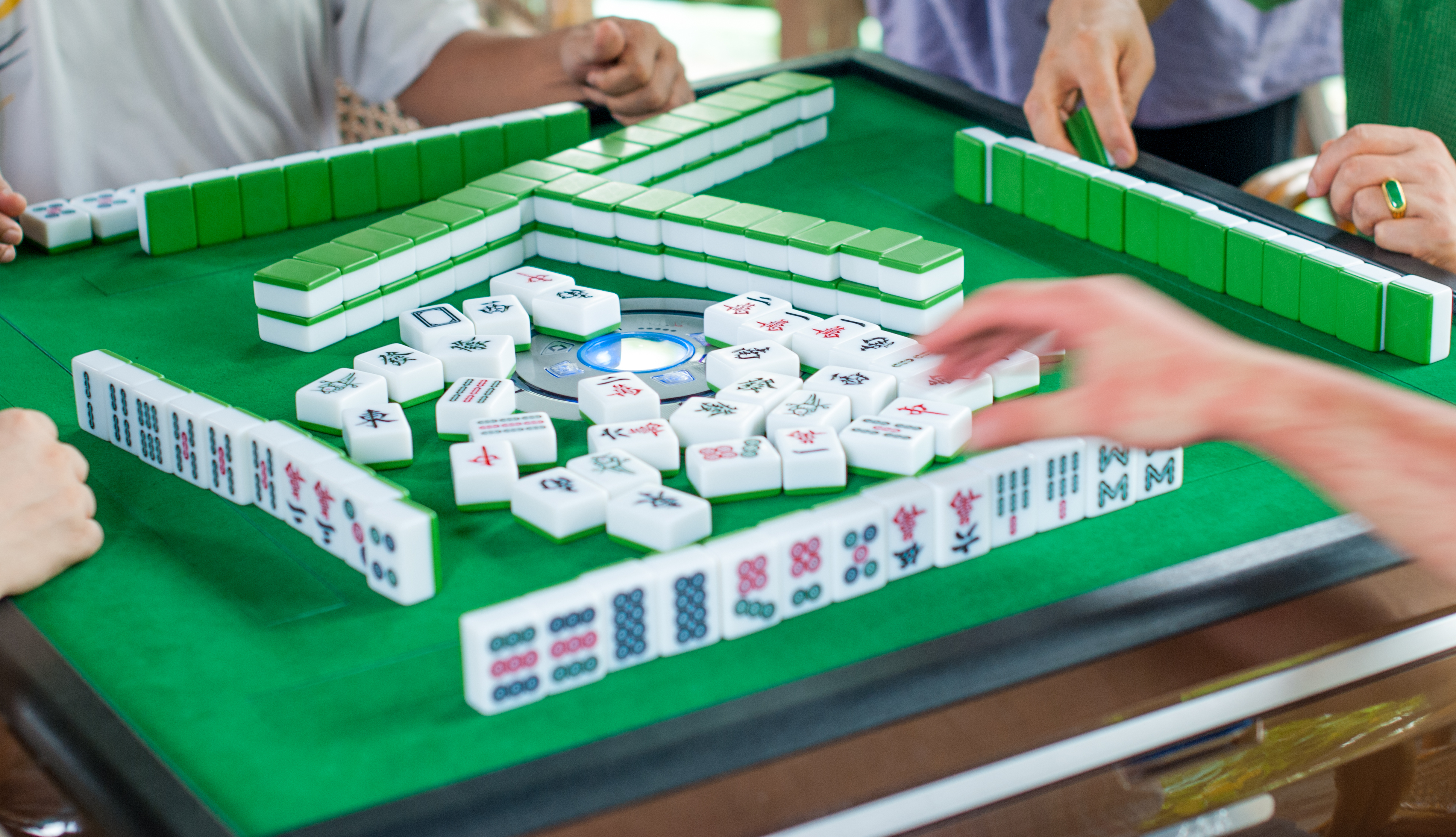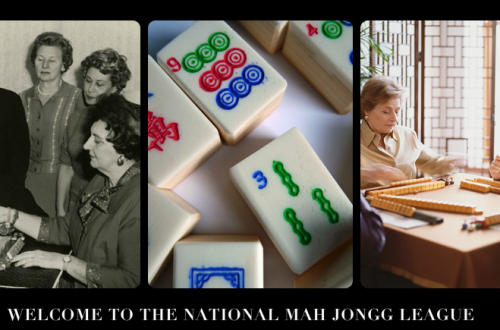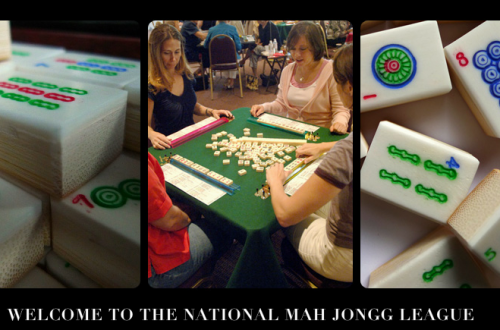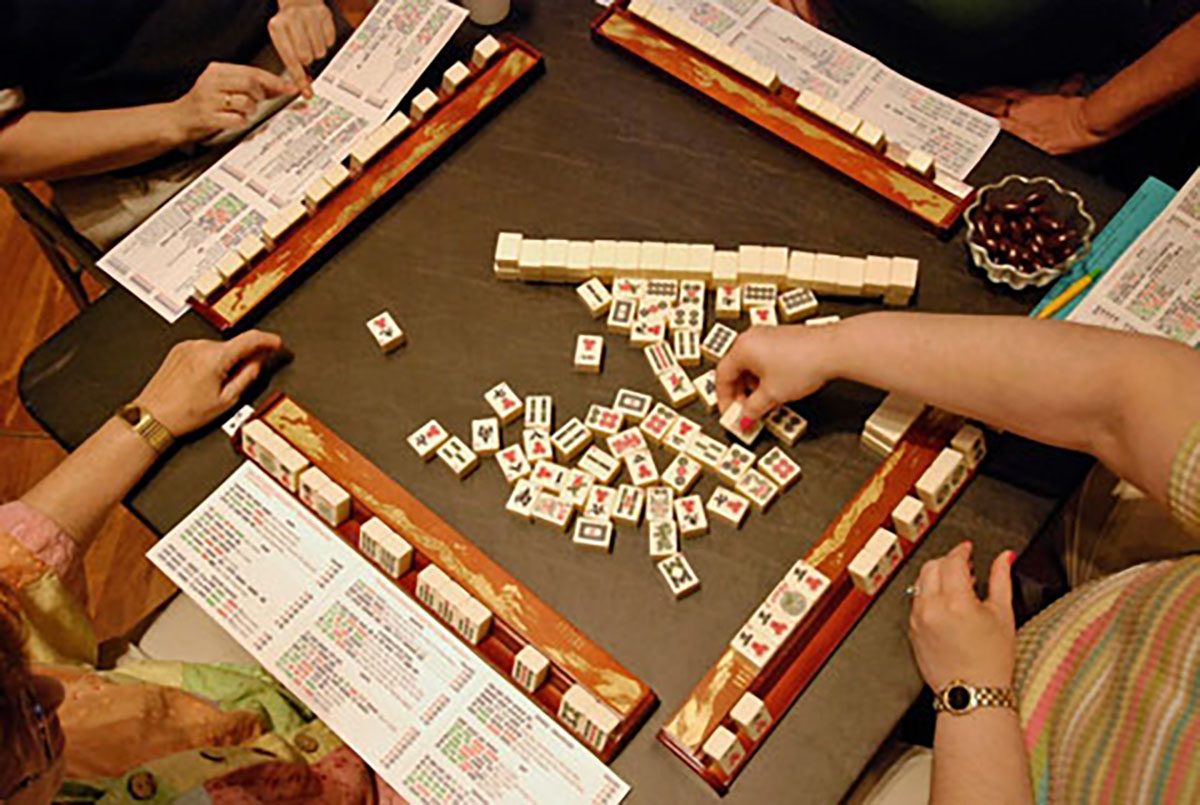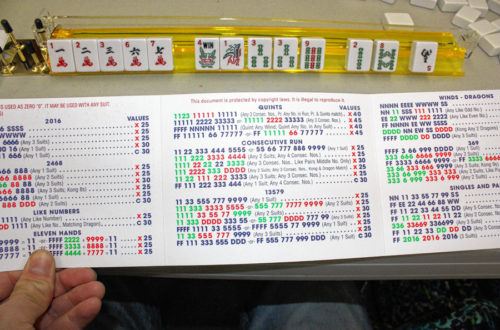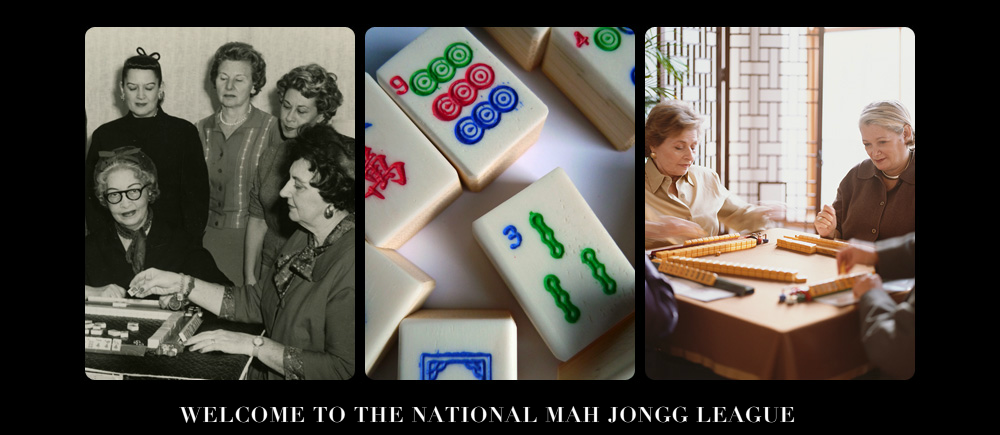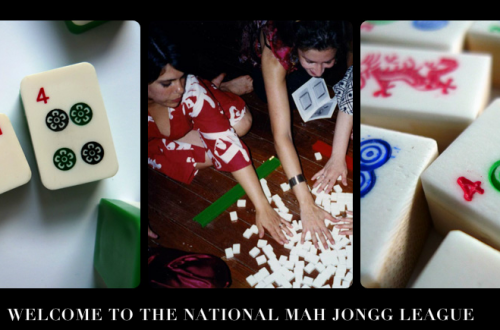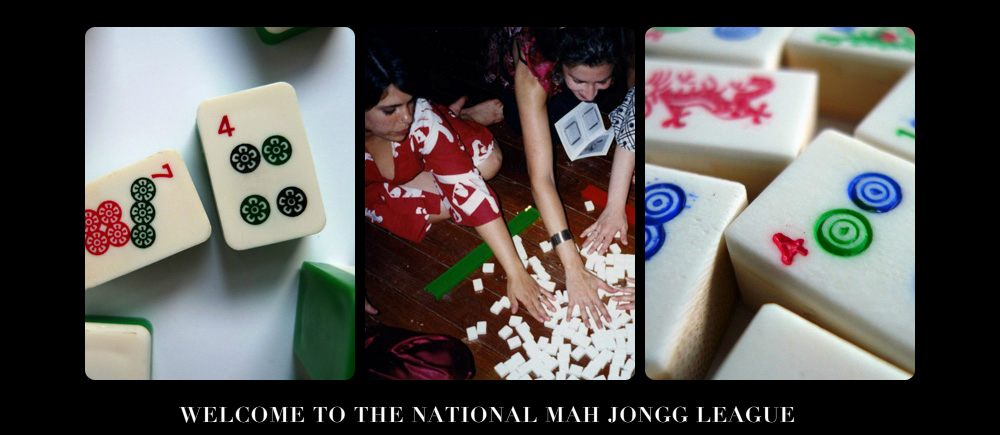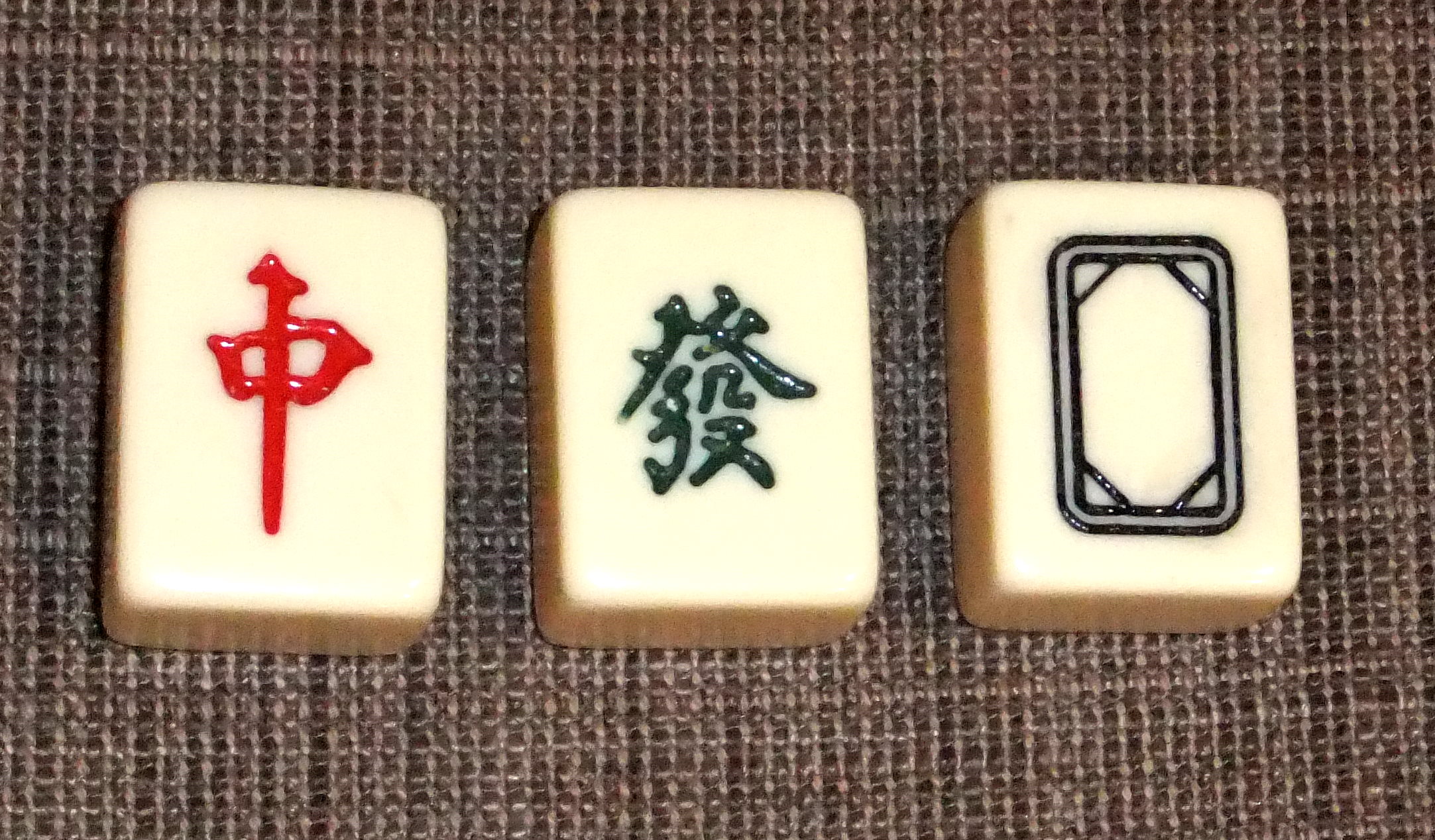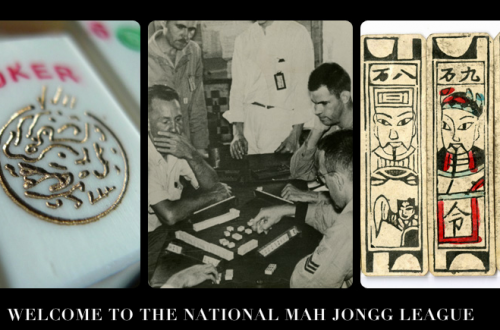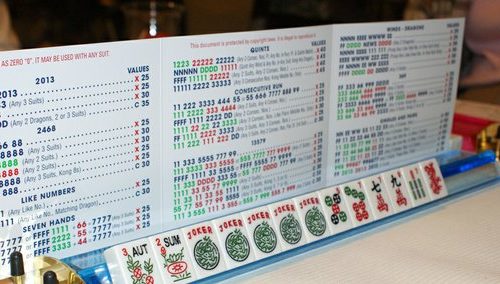-
Mahjong 101: Making Mahjong
When all thirteen (13) tiles match a hand on the card, and you either pick the 14th tile needed to complete the hand, or someone discards it, you may declare “Mahjong” and you are the winner. Scoring is as follows: If you make Mahjong on a discard, you are paid the value of the hand. Discarder pays double. If you pick your Mahjong tile, you are paid double the value of the hand.If you make Mahjong on a discard and you were bet on, you get double, and you share your winnings evenly with the bettor. If you pick Mahjong and are bet on, you get four times the value…
-
Mahjong 101: Jokers
A joker may be used as a wildcard to fill in any pung, kong or quint. A pung, kong or quint may be entirely composed of jokers. A JOKER MAY NEVER BE USED TO COMPLETE A PAIR. The singles and pairs hands are worth more because you may not use any jokers in these hands. Keep in mind you cannot use a joker in a singles and pairs set such as NEWS or 2009 If someone has called a tile and exposed a pung, kong or quint and they are showing jokers, if you have the tile they need, you may exchange it and keep the joker for yourself. In other…
-
Mahjong 101: Calling Tiles
If the hand you are playing has an X next to the value of the hand, the hand is designated as a calling, or open hand. A hand with a C is a closed hand and if a tile you need is discarded, you may not call it from the table. If a tile you need is discarded, and you are playing an open hand, you may call the tile to complete a pung, a kong, a quint or to make Mahjong. A tile may not be called to make a pair, unless it is your Mahjong tile. Once you call a tile, you must expose the pung or kong…
-
Mahjong 101: Picking a Hand
The most difficult aspect of modern American of Mahjong is to determine which hand to aim for. While you may have many tiles that belong in one category, a player may be missing a whole family, or a pair of tiles that may prove difficult to obtain. Next to each hand is a number, which tells how much the hand is worth. The harder the hand, the more it is worth. A hand with a value of 25 is usually easier to work out than a hand with a value of 50. Back to Mahjong 101: The Rules
-
Mahjong 101: Reading the Card
Mahjong cards are printed in three colors; red, blue and green. If a hand is printed entirely in one color, it means that all tiles in that hand are to be from ONE SUIT. Similarly, if a hand is printed in two colors, the tiles are to be selected from TWO DIFFERENT SUITS; and three colors, THREE DIFFERENT SUITS. For example, in consecutive runs, a hand may read: 11 222 3333 444 55, in all one color. In order to make Mahjong, you must have all the above tiles, in the above order in one suit only. In other words, if you are using Dots, you must have two one dots, three two dots, four three dots, etc. Another…
-
Mahjong 101: The Hands
The Mahjong Card is organized in categories but each year the specific hands are changed. They main categories of hands are: YEAR – Year hands or other special hands are usually the current year.These hands utilize tiles which make up the year: i.e., 1’s and 9’s.for 1999, 2’s and 0’s for 2000. The white dragon represents a zero, as there is no tile with an actual zero.You cannot use a joker for any tile in a year; i.e., 2009. They are considered singles and pairs. 2468 – Self-explanatory. Hands concentrate on even numbers. MULTIPLICATION – These hands perform a type of multiplication, such as FFFF 5555 x 5555 = 25 . You would need four flowers, four…
-
Mahjong 101: The Play
After the optional last across pass, East discards a tile from her rack, placing it face up on the table and naming it out loud. The player to East’s right then picks a fresh tile from the wall, looks at it, and decides whether or not she wants to keep it. If she keeps it, she places it in her rack and then discards a tile. If she does not want it, she places it face up on the table and names it. The play continues in turn, with each player picking and then discarding. When a wall is exhausted, the wall to the left gets pushed out. The last wall to be played…
-
Mahjong 101: Passing aka “The Charleston”
Each player puts her tiles on her rack, facing her but concealed from the other players. The player then organizes her tiles in groups and pairs according to the categories on the card. Three unwanted tiles are picked for passing. The passing is organized into two “Charlestons,” as follows: First Charleston (compulsory):Each player gives 3 tiles to the player on her RIGHT; thenEach player gives 3 tiles to the player ACROSS from her; thenEach player gives 3 tiles to the player on her LEFT. At the end of the first Charleston, any player may decide to halt the passing and proceed to the final Optional pass. Second Charleston ( compulsory ): If no one…
-
Mahjong 101: Dealing
One person is selected to be East. You can choose East by throwing the dice, arbitrarily choosing the hostess or by actual seating arrangement. To begin dealing, East throws the dice. The number on the dice indicates where East will break her wall. If, for example, East throws a 10 on the dice, she will take ten groups of two tiles from the right end of the wall and keep them separate. They are reserved until the end of the game. East takes four tiles (two groups of two) from the remainder of her wall. Then the player to the right of East takes four tiles and then the next player to…
-
Mahjong 101: The Tiles
The modern American Mahjong set has 152 tiles. The tiles consist of: CRAKS (also called Characters) – Numbers 1 through 9 – Four (4) each. BAMS (also called Bamboos) – Numbers 1 through 9 – Four (4) each. DOTS (also called Circles) – Numbers 1 through 9 – Four (4) each. Four (4) red DRAGONSFour (4) green DRAGONS Four (4) white DRAGONS (“soaps”) Four (4) WINDS for each direction: North, East , South and West for a total of sixteen (16) Winds Eight (8) FLOWERS Eight (8) JOKERS The tiles are mixed, turned face down, and each player makes a wall in front of their rack – nineteen tiles long and…

